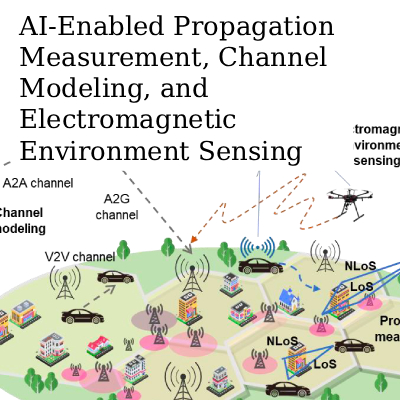Download Call for Papers (PDF)
Submission Deadline: April 30, 2026

Advancements in wireless technologies, including IoT, 5G, RFID, and wearables, necessitate the development of efficient electronic devices for remote sensor deployment. Traditional power sources like batteries and wired connections are impractical for long-term use, leading to frequent replacements and raising environmental concerns. Wireless energy harvesting (WEH) or RF energy harvesting (RFEH), along with wireless power transfer (WPT) techniques, have emerged as solutions to these challenges. Antennas are crucial in these systems, converting ambient electromagnetic radiation into usable DC power.
Metamaterials and metasurfaces have introduced groundbreaking concepts in electromagnetics (EM), inspiring new design methodologies for EM devices and systems. Metamaterials can manipulate EM waves in both bulk states and across 2-D surfaces, leading to the development of metasurfaces, which are currently gaining significant attention.
A metasurface is an artificial material composed of an array of unit cell structures. Their thin, low-profile, and cost-effective characteristics have facilitated the creation of numerous innovative EM functions and devices, such as metasurface-inspired antennas, metasurface superstrates, and metalenses. Electromagnetic waves propagate differently in a metasurface compared to a homogeneous medium, exhibiting three unique properties: extremely short wavelength, abrupt phase change, and chromatic dispersion. These properties distinguish wave propagation in metasurfaces from that in natural materials and traditional metamaterials. Metasurface-based RFEHs/WEHs have emerged as a promising solution to meet the growing demand for efficient and sustainable energy sources across various applications. These engineered structures, composed of subwavelength meta-atoms, exhibit unique electromagnetic properties that can enhance the performance of RFEH devices. The ongoing research and development in this field are opening new avenues for the design of advanced EM devices. This special section invites novel and unpublished works on metasurface/metamaterial-related antenna designs for RFEH/WEH and WPT applications.
Potential topics include but are not limited to the following:
- Modeling and characterization of antennas for harvesting applications.
- 3-D Antennas for wireless energy harvesting/power transfer systems.
- Designing of high-efficiency and low-powered rectifier circuits.
- Higher-order harmonic attenuating bandpass filter designs.
- New design topologies for high-performance rectenna systems.
- Miniaturized array configurations and beam-steering topologies for high gain and efficient rectenna systems.
- Flexible and wearable rectenna system for lightweight and portable wireless sensor networks.
- Compact Metamaterial/Metasurface designs for performance enhancement of rectenna systems.
- Semiconductor devices for energy harvesting and power transfer applications.
- Multi-layered strategy for energy harvesting system designs.
- Millimeter-wave wireless harvesting system designs.
- Multichannel selection strategy and energy harvesting in cognitive radio systems.
- Machine Learning for modeling of antenna/rectifier/rectenna designs.
- Evolutionary algorithms for optimization of rectenna designs and performance efficiencies.
Keywords:
- Metasurface antennas
- Metasurface-based antenna array
- Metasurface structures
- Metasurface-based rectennas
- Beam steering antenna systems
- Switched-beam power transfer systems
- Rectifier structures
- DC combining structures
- RF combining structures
Lead Guest Editor:
Nasimuddin
Institute for Infocomm Research (I2R),
Agency for Science, Technology and Research (A*STAR), Singapore
Guest Editors:
Abdulrahman Amer
Universiti Tun Hussein Onn Malaysia (UTHM), Malaysia
Boon-Chong Seet
Auckland University of Technology, New Zealand
Rajkishor Kumar
Vellore Institute of Technology, India
Merih Palandoken
Izmir Katip Celebi University
Alireza Ghaneizadeh
Constructor University, Germany













